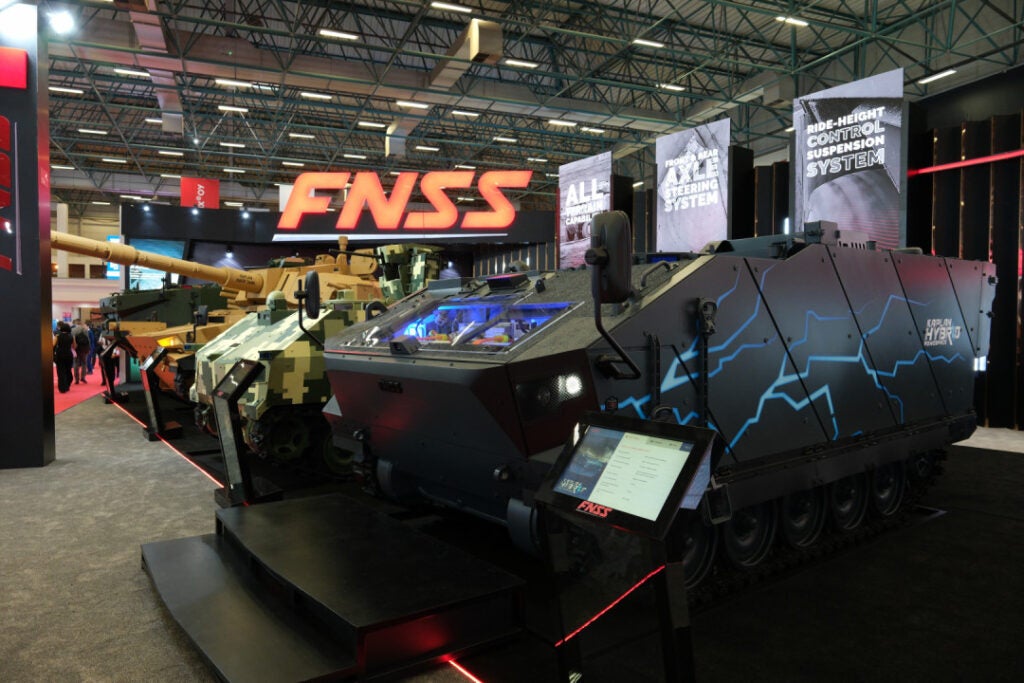IDEF 2023: FNSS Unveils the Kaplan Hybrid Vehicle
At the 16th International Defense Industry Fair (IDEF 2023), Turkish armored vehicle manufacturer FNSS debuted a new version of the KAPLAN-10 Armored Fighting Vehicle, which is currently in service with the Turkish Armed Forces, with an integrated hybrid power group. Many prominent industry figures and press members attended the launch ceremony of the KAPLAN HYBRID, including FNSS General Manager Nail Kurt, Minister of National Defense Yaşar Güler, and Deputy Minister of National Defense Dr. Celal Sami Tüfekçi.
In his speech at the presentation, FNSS General Manager Nail Kurt stated that the 20-ton class project is the first stage of a two-stage solution in this field, and that they will eventually aim for a solution that can be applied to 30-40 ton class vehicles and light tanks. Kurt stated that once the 40-ton qualification is completed in 3-4 years, it will be possible to develop a hybrid power group that can be used for main battle tanks due to advances in battery technology. Kurt noted that the hybrid engine provides significant gains in take-off speed, range, and fuel economy, and that the hybrid power group could be an option in the third phase of the Turkish Armed Forces’ Enhanced Armored Personnel Carrier Project.
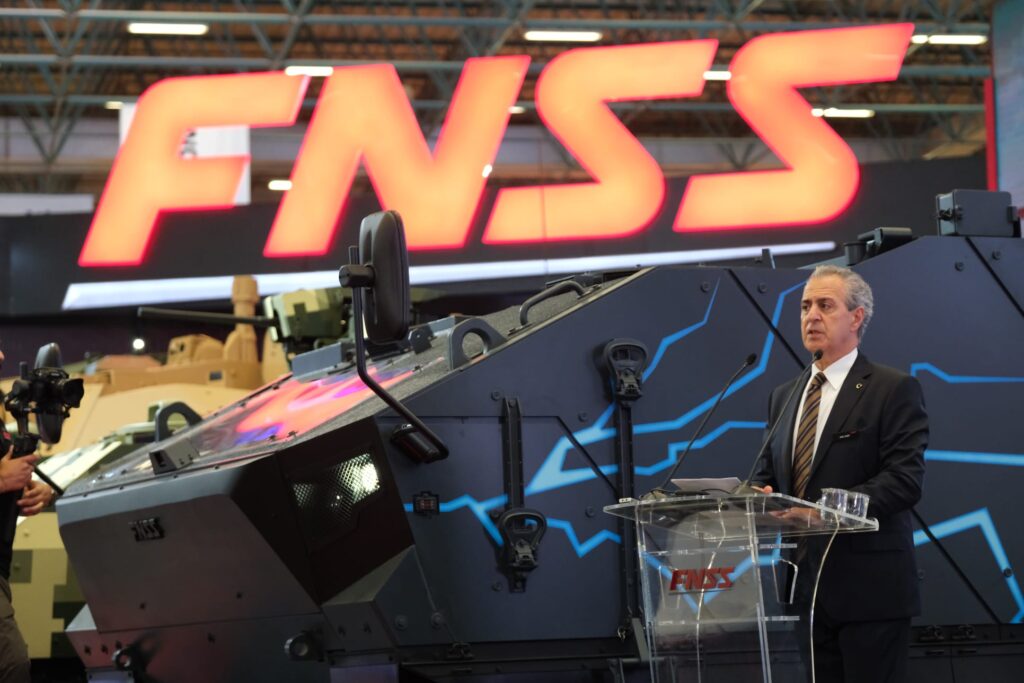
Göktuğ Burak Çalık, FNSS power group systems unit manager, stated that the Kaplan is currently serving as a weapon carrier in the Turkish Armed Forces, adding, “The Kaplan is a vehicle that normally uses a conventional diesel engine and transmission. We have been working on this subject for about 3-4 years, and we have developed a hybrid power group, and our work in this field continues. At the fair, we are exhibiting this vehicle in the flesh. We are very happy that we were able to develop this vehicle and get it to the stage where it can be showcased.”
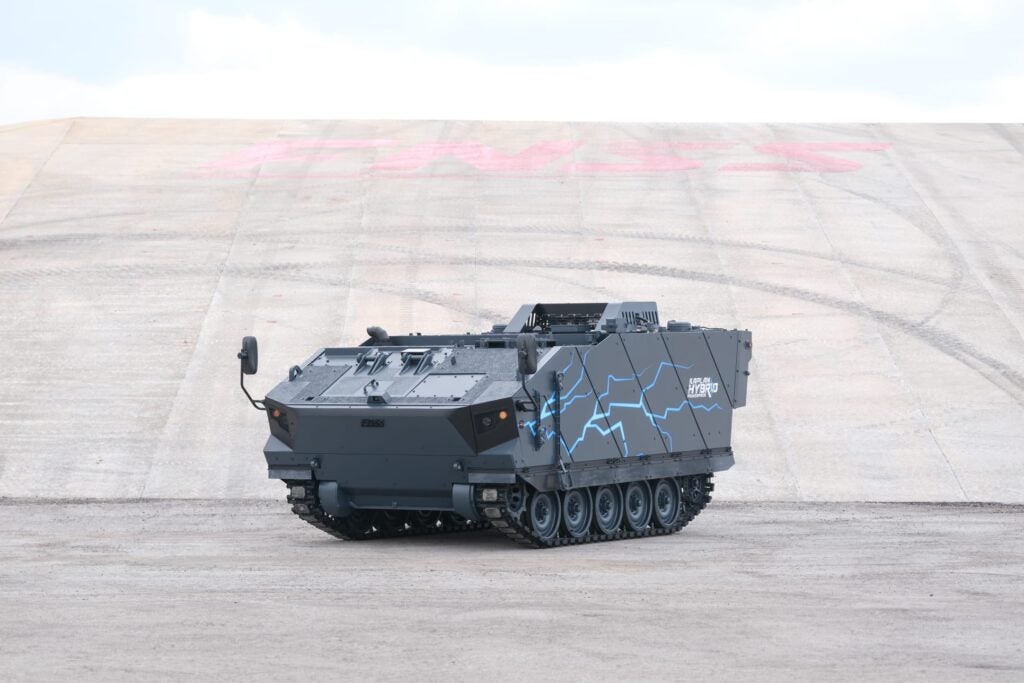
The HYBRID power group development project was launched in 2021 with the goal of developing a unique hybrid power group solution that can be integrated into the tracked vehicle platforms currently in the company’s product range, tracked vehicle platforms that are likely to be produced in the future, as well as all tracked vehicle families in need of modernization. The assembly of the first prototype vehicle is currently complete, and control software development and other improvements are ongoing. The project, which is scheduled to begin critical verification tests by the end of 2023, also aims to produce a reliable alternative solution for tracked vehicle transmission, for which the country is heavily reliant on foreign sources and the number of manufacturers is limited.
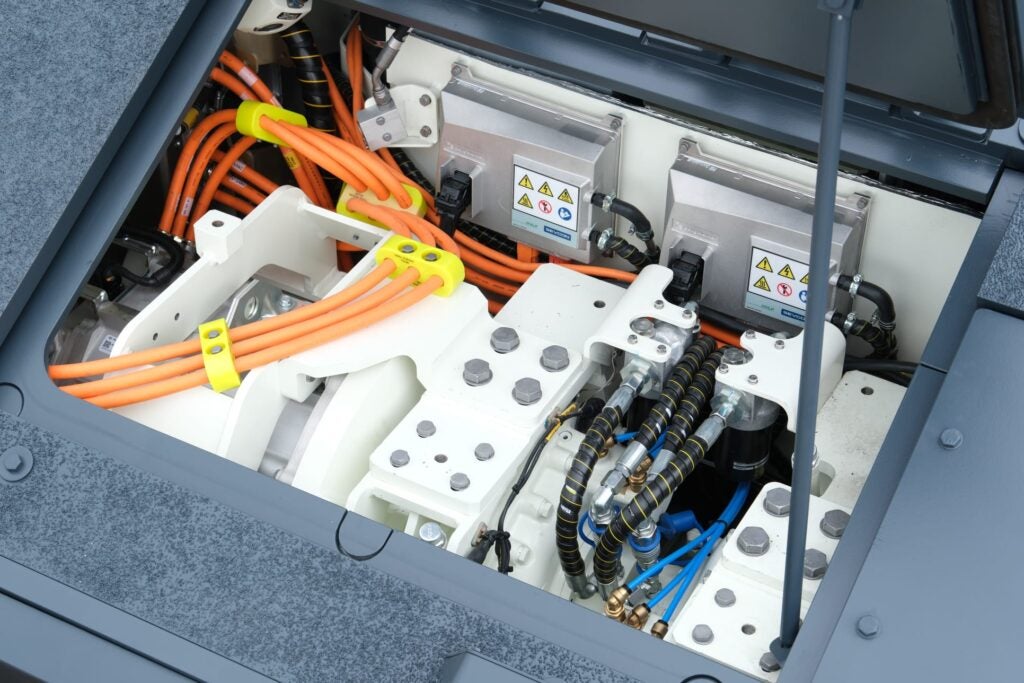
The KAPLAN Hybrid Vehicle, according to the company, stands out with features such as silent driving, extended silent monitoring, and increased fuel economy in combat and reconnaissance scenarios, thanks to its hybrid power group solution. In terms of its technical specifications such as weight, length, height, width, and the number of personnel it can carry, FNSS say the Kaplan hybrid vehicle is nearly identical to the KAPLAN-10 Armored Fighting Vehicle. The main difference between the two vehicles is that the Kaplan-10 is powered by a diesel engine coupled to a fully automatic transmission, whereas the Kaplan hybrid is powered by a 400-hp diesel engine that drives two electric permanent magnet synchronous motors (PMSMs) via a cross drive transmission. The KAPLAN hybrid can reach a top speed of 65 km/h and has a range of 525 kilometers thanks to its power group.
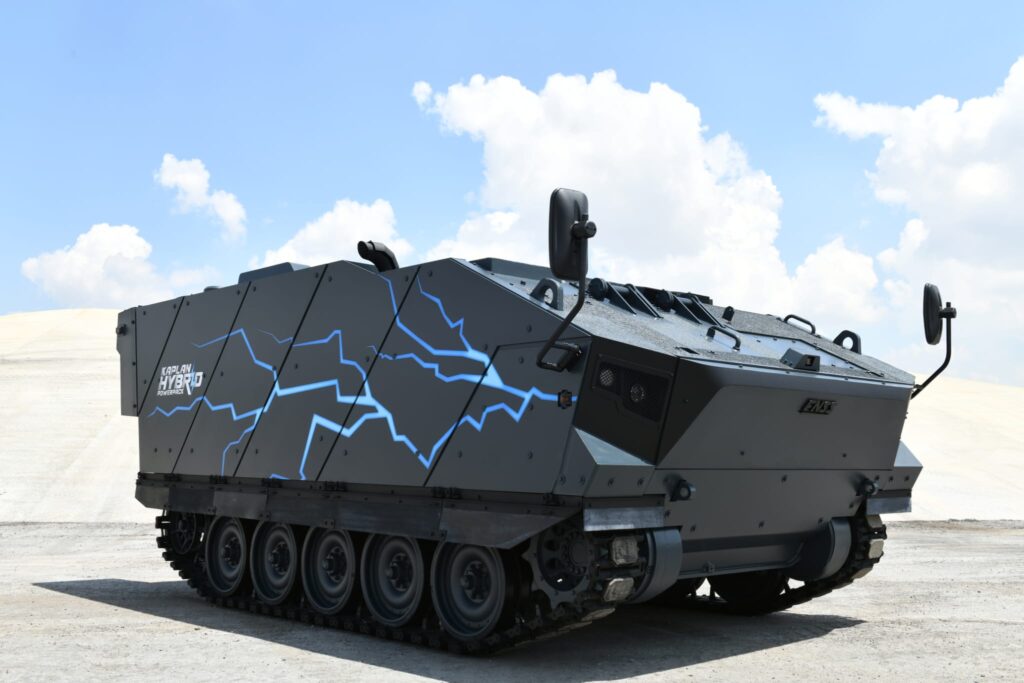
The new hybrid propulsion system provides improved acceleration to the KAPLAN Hybrid Vehicle thanks to electric motors that produce high torque at low revs. The diesel engine KAPLAN vehicle, for example, can go from 0 to 32 kilometers in 9-9.5 seconds, whereas the KAPLAN HYBRID can do so in 5.5 seconds. The Hybrid Power Group reportedly offers a significant advantage in fuel efficiency over diesel-powered vehicles, thanks to the efficient operation of the vehicle’s diesel generator and energy storage in the batteries. As a result of this advantage, the Hybrid Power Group has a 10% greater total range than the diesel power groups.
Another feature provided by the hybrid drive system is the silent operation mode of the vehicle. With its lithium-ion battery power offering 800V and 56kWh, the serial hybrid configuration enables near-silent driving as well as enabling on-board systems to operate for reconnaissance and communication, without the need for the diesel engine to run. Thanks to these batteries, the vehicle can operate in silent driving mode for 20 km at a constant speed of 10 km/h and in constant silent surveillance mode for 48 hours. Furthermore, this silent operation capability will drastically diminish the vehicle’s acoustic and thermal signature, making it difficult to detect the vehicle.

